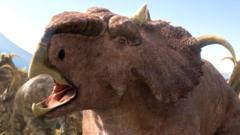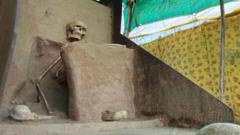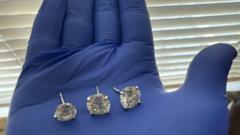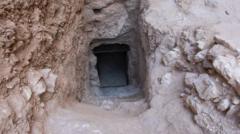The recent excavation of a lavish bathhouse in Pompeii has provided astounding insights into elite Roman life, uncovering artwork and the unsettling fate of two residents during the disastrous AD79 volcanic eruption.
Unearthing Luxury in Pompeii: A Breathtaking Bathhouse Discovery
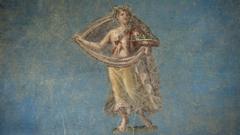
Unearthing Luxury in Pompeii: A Breathtaking Bathhouse Discovery
Archaeologists unveil the largest private bathhouse ever discovered in Pompeii, revealing opulence and the stark reality of life before the eruption of Mount Vesuvius.
After two millennia concealed beneath volcanic rock and ash, a magnificent “once-in-a-century” discovery has surfaced in Pompeii, Italy, offering a glimpse into the opulent lives of its ancient inhabitants. Archaeologists have unveiled a luxurious private bathhouse, believed to be the largest ever discovered in the city, featuring an intricate layout of hot, warm, and cold rooms, stunning artwork, and a grand plunge pool.
Dr. Gabriel Zuchtriegel, director of the Archaeological Park of Pompeii, highlighted the significance of the find, likening it to living history, as it appears as if Pompeii’s residents departed just moments before. The bathhouse, adorned with vibrant red walls and a striking mosaic floor, sits at the core of an expansive home unearthed during an ongoing excavation that has been the most extensive in decades.
The discovery adds to the ongoing narrative of the lives of Pompeiians before the catastrophic eruption of Mount Vesuvius in AD79. Analysis of two skeletons found within the bathhouse reveals the tragic end met by its last occupants. The remains of a woman, aged between 35-50, were found clutching coins and jewelry, while a male skeleton in his early twenties was located in a prone position. Both had sought refuge in a small room but were ultimately claimed by a devastating pyroclastic surge.
As archaeologists continue their meticulous work, the newly discovered block of Pompeii reveals not only the bathhouse but also a bakery and laundry, all possibly linked to a wealthy individual, speculated to be Aulus Rustius Verus, a notable Pompeii politician. Dr. Zuchtriegel emphasized that the presence of private bath facilities marked extreme wealth, as only a select few homes boasted such luxuries.
The bathhouse invited elite bathers into an experience of exquisite relaxation. Practitioners would begin in the changing room, transition through heating rooms, and finally unwind in the frigidarium, a cooling chamber with beautiful decor and a plunge pool spacious enough for 20-30 users.
Further excavations have revealed more exceptional spaces within the residence, including a grand banqueting hall and a serene prayer room. During the renovations preceding the eruption, construction materials were also discovered alongside unique artifacts, including oyster shells intended to embellish the walls for aesthetic purposes.
The findings provide both an extraordinary look at luxury and an astute contrast with the harsh realities faced by those less fortunate. Behind the grandeur of the baths lay the hot and cramped boiler room, wherein enslaved individuals toiled to keep the systems running, strikingly contrasting their lives with the elite bathers’ indulgences.
As the excavation nears completion, archaeologists like Dr. Anna Onesti express optimism about uncovering more hidden treasures. “Every day here is a surprise,” she states, emphasizing the excavation’s depth of discovery. The site is gradually preparing to welcome the public, promising to share the enduring magic of Pompeii’s past.
The documentary series “Pompeii: The New Dig” showcases these monumental findings, airing on BBC Two. As Pompeii continues to reveal its secrets, it remains a testament to the fascinating and complex tapestry of ancient Roman life.



